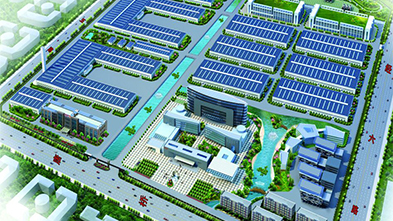Product
News
Contact
Company Name: Guotang Automobile Co., Ltd.
Contact: Chen Lei
Mobile: 15950340707
E-mail: 110942068@qq.com
Website: www.guotangauto.com/en
Address: No. 88, South Ring Road, High-tech Economic Zone, Jianhu County
Introduction of new energy vehicle components
Introduction of new energy vehicle components
Date of release:2019-05-19 Author:Guotang Automobile Co., Ltd. Click:
From the perspective of the development of new energy vehicles around the world, its power sources mainly include lithium-ion batteries, nickel-hydrogen batteries, fuel cells, lead-acid batteries, and supercapacitors. Supercapacitors are mostly in the form of auxiliary power sources. The main reason is that these battery technologies are not fully mature or have obvious shortcomings. Compared with traditional vehicles, there are many gaps in terms of cost, power and cruising range. This is also an important reason for restricting the development of new energy vehicles.
battery
Lead-acid batteries
Lead-acid batteries have a history of more than 100 years and are widely used as starting power sources for internal combustion engine vehicles. It is also a mature electric vehicle battery, which has good reliability, easy availability of raw materials and low price; the specific power can basically meet the power requirements of electric vehicles. However, it has two major drawbacks; one is lower than the energy, the mass and volume are too large, so the mileage of one charge is short; the other is the short service life and the use cost is too high.
Nickel-metal hydride battery
Nickel-metal hydride batteries are alkaline batteries. Nickel-metal hydride batteries have a long service life and high energy density, but they are expensive and have a memory effect. The company that produces electric vehicle nickel-metal hydride batteries abroad is mainly a joint venture between Ovonie, Toyota and Panasonic. Ovonie has 80A·h and 130A·h unit cells with a specific energy of 75-80W·h and a cycle life of more than 600 cycles. The battery is used in several types of electric vehicles. One type of vehicle can travel 345km on a single charge, and one vehicle travels more than 80,000 kilometers a year. Domestically, 55A·h and 100A·h unit batteries have been developed, with a specific energy of 65 W·h and a power density of more than 800 W.
Lithium Ion Battery
As a new high-voltage, high-energy-density rechargeable battery, lithium-ion secondary batteries have unique physical and electrochemical properties and have broad prospects for civil and defense applications. Its outstanding features are: light weight, large energy storage (high energy density), no pollution, no memory effect, long service life. Under the same volumetric weight, the lithium battery has 1.6 times the storage capacity of nickel-metal hydride batteries and 4 times that of nickel-cadmium batteries, and humans only develop 20% to 30% of its theoretical power. The development prospects are very bright. At the same time, it is a true green battery that does not pollute the environment. It is the best battery that can be applied to electric vehicles. Since the 1990s, China has developed and utilized lithium-ion batteries, and has made breakthroughs so far, and has developed lithium-ion batteries with independent intellectual property rights.
Nickel-cadmium batteries
The application of nickel-cadmium batteries is second only to lead-acid batteries, and its specific energy can reach 55W·h, and the specific power exceeds 190W. It can be quickly charged and has a long cycle life. It is more than twice as long as lead-acid batteries, and can reach more than 2,000 times, but the price is 4 to 5 times that of lead-acid batteries. Although its initial acquisition cost is high, its long-term practical use cost is not high due to its advantages in terms of energy and service life. The disadvantage is that there is a "memory effect", which is easy to reduce the available capacity of the battery due to poor charging and discharging. It must be fully charged and discharged after about ten times of use. If there is already a "memory effect", it should be continuously charged and discharged 3 to 5 times to release the memory. In addition, cadmium is toxic, and it is necessary to pay attention to recycling work during use to avoid environmental pollution caused by cadmium.
Sodium-sulfur battery
Advantages of sodium-sulfur batteries: One is higher than energy. Its theoretical specific energy is 760W·h, which is actually more than 100W·h, which is 3-4 times that of lead-acid batteries; the other is high-current, high-power discharge. The discharge current density is generally up to 200-300 mA2, and its intrinsic energy can be released three times instantaneously; the other is high charging and discharging efficiency. Since a solid electrolyte is used, there is no self-discharge and side reaction which usually employs a liquid electrolyte secondary battery, and the charge and discharge current efficiency is almost 100%. The disadvantage of sodium-sulfur battery is that its working temperature is 300-350 °C. Therefore, the battery needs certain heating and heat preservation when working. The high temperature corrosion is serious and the battery life is short. High-performance vacuum insulation technology has been used to effectively solve this problem. There are also problems such as poor performance and poor safety.
Battery policy subsidy advantage
In February 2009, the Ministry of Finance and the Ministry of Science and Technology issued the “Interim Measures for the Administration of Financial Subsidy Funds for the Demonstration and Promotion of Energy-Saving and New Energy Vehicles”, referring to the use of lead-acid batteries and hybrids using nickel-metal hydride batteries and lithium-ion batteries. The car subsidies, the maximum subsidy is 80,000 yuan / vehicle and 420,000 yuan / vehicle. The new energy vehicle subsidy released in June 2010 is based on battery capacity as the only indicator to determine subsidies, and lead-acid batteries are completely denied. The definition of new energy vehicles in the early stage included the lead-acid battery project, and the power battery that was explicitly subsidized this time did not include lead-acid batteries. And nickel-metal hydride batteries, which are the main force of hybrid power, will also be subsidized. It can be seen that at the policy level, the largest benefit of lithium-ion power batteries and supercapacitors.
Battery price trend
In terms of price trends, the price of fast-charged lithium-ion power batteries for electric vehicles is around $1600/kwh, and the price of ordinary lithium-ion power batteries is $500/kwh. According to the price trend of US gasoline and electricity, during the entire life cycle of automobiles. The fast-charged lithium-ion power battery electric vehicle with a 100km endurance capacity is 25% higher than the gasoline engine internal combustion engine with comparable performance. Once the price of electric vehicles for electric vehicles drops to $200-300/kwh, the cost of using electric vehicles will be comparable to that of conventional cars. According to the forecast, with the encouragement of relevant policies of various countries, the demand for lithium ion for electric vehicles in the world will be close to 50Gwh in 2020. The cost of fast-charged batteries is expected to drop to $400-500/kwh in 2020, and the price of ordinary power batteries can drop to $200-300/kwh.
The address of this article:http://www.guotangauto.com/en/news/438.html
Recently browse:
Related products:
Related news:
苏ICP备19031716号 Powered by Clouds platform Technical Support:Xiangyun Platform Yancheng Company





